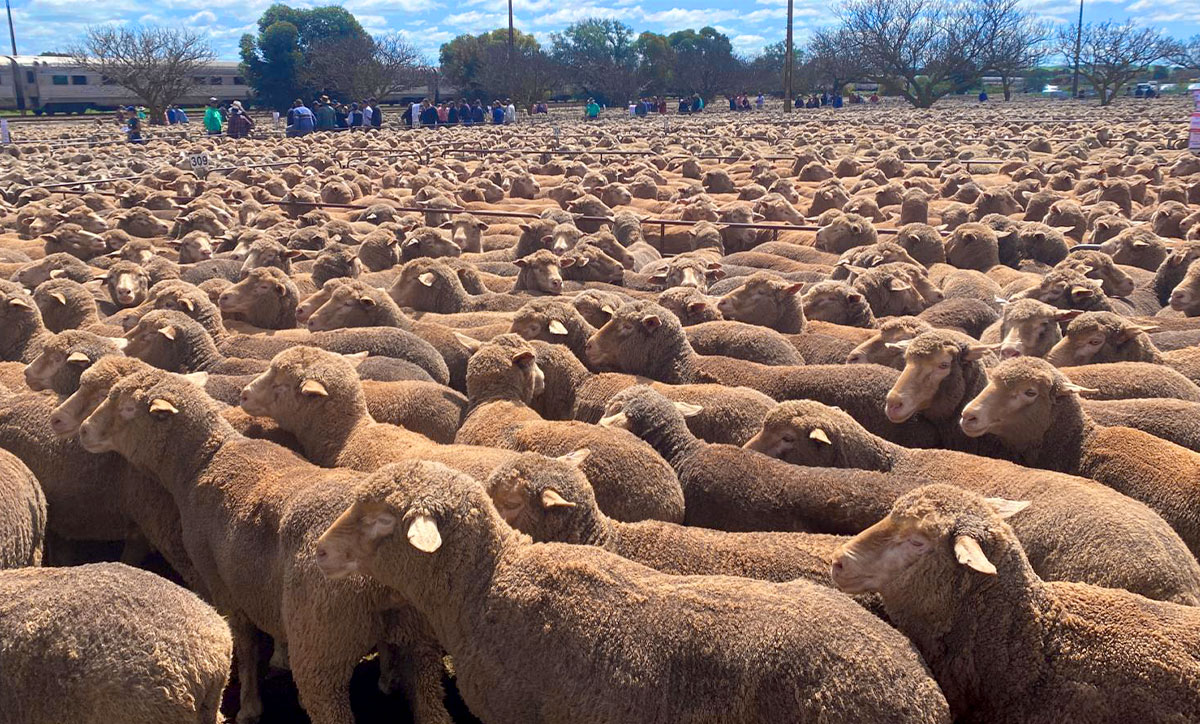Mutton to the Rescue!

Dec 15, 2022
Chris Howie, StockCo’s National Business Development Manager explains how mutton can be a versatile trade if you act fast.
Mutton as a commodity is the poor cousin to lamb and beef when talking about price. How times have changed when the older generation once lived on mutton and rabbit. Lamb was unheard of, beef too expensive and chicken was the old boiler when she stopped laying for Xmas only.
The days of the heavy export “Kuwait” 5 year old merino wether are long gone. However, I did see about 150 at Ballarat sale recently that would have been 100kg liveweight. Imagine trying to get shearers – I think these were shorn by the sons.
These days, most of the Australian mutton supply comes from cast for age ewes (CFA) that have lost teeth or soon will and can no longer support a lamb.
As a rule, in the Australian sheep sale cycle, we see the values of mutton increase as the supply of lambs decrease. They become a ready-made gap filler for processors to ensure abattoirs continue to run effective economies of scale, normally during winter. As mutton is a base level commodity and very little is eaten domestically, Australian mutton prices are totally reliant on the international export demand.
I think butchers reintroducing mutton may get a surprise – budget cow beef sells, why not mutton? –lets help keep red meat on the table in times of high lamb and beef pricing.
Reading several analysts reports it shows that our October and November mutton slaughter rates were equal to or up on 2020. Why is this so? (The older crew might remember scientist Julius Sumner Miller saying this on black and white TV)
- September and October rain saw a significant disruption to the lamb supply across all areas
- Many lambs were not heavy enough to meet export specifications
- Contract lambs were getting pushed back to gain more weight
- The FMD scare pushed a lot of older underdone lambs to market in July /August collapsing price but also removing the residual numbers from September – no weight available.
All of the above created an artificial supply hole at a processor level, basically a second winter. This in turn saw mutton become the processor fallback position – especially light sheep to fill the gaps therefore driving price higher.
Now the lambs have arrived in full force the need for mutton has rapidly decreased, cold stores have additional mutton stocks because of the last 2 months and international demand has softened. The MLA mutton indicators suggests a 4 year low but what I have seen over the last 2 weeks I suggest it got as cheap as we have seen since 2012 – 2014. Goat has suffered the same rapid decline in value falling from all time highs of nearly $10 / kg to $3.50 per kg. Again, a base commodity impacted by income pressure on lower income families in our export destination countries.
The noise around the cessation of live export of sheep may also have more impact than we think. Several export destinations are prepared to take chilled or frozen product but still want a significant proportion as live animals. Australian reticence to commit to an extended supply arrangement that has been functional since the early 70’s may now be seeing these long-term destinations looking for alternate supplies from other countries.
Real opportunity – The current saleyard price for merino ewes provides excellent trading opportunity with a multi sale outlet in May, June and July. As with all opportunity windows I don’t think you have long before the market bounces and that’s why being ready to act is so important when trading.
- In the first instance these ewes will provide you with about 8 months wool if August / September shorn. Conservative 3.5 – 4kg of fleece
- Heavy ewes stay fat if fed well and use less feed because you don’t have to fatten them
- Light ewes provide weight gain and price lift on most grids
- Join to your resting rams and offer as SIL ewes if the demand is there later
- Instead of spray use sheep to bust your summer weeds – less diesel and something to sell at the end
- Older sheep eat a lot rougher fibre than fussy lambs if you have a heavy grass burden to break down.
StockCo specialise in providing funding for these opportunistic trades. We work hand in glove with you and your agent when time is of the essence. With even a modest lift in mutton pricing leading into winter the current buy prices for this trade works. Use our calculator to run some sums on the gross margins achievable.
As always our Regional Livestock managers are happy to have a chat.


